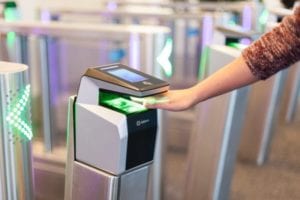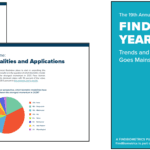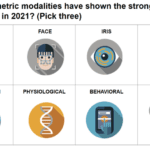
The COVID-19 pandemic has forced the commercial aviation industry into a state of accelerated transformation as demand for a safe, hygienic, and secure way to fly skyrockets. The core of this major change is biometric identity, which can be deployed in a contactless and convenient manner promoting social distancing and touchless user experience. As a pioneer of border control biometrics and contactless authentication technologies, it’s no surprise IDEMIA is already working to adapt airports to the new normal.
That is the starting point for this interview with Pedro Alves, IDEMIA‘s Vice President, Business Development, Extended Borders. Alves speaks to FindBiometrics President Peter O’Neill about IDEMIA’s history in aviation, and how the company is already making moves to enable positive travel experiences for passengers in the new normal. The conversation jumps off from the border control sector to take an expanded view of how the biometric technology making airports safe again can be applied to healthcare, government, sports, and even the entire smart city ecosystem of the future.
Read the full FindBiometrics interview with Pedro Alves, Vice President, Global Business Development, Extended Borders, IDEMIA:
Peter O’Neill, President, FindBiometrics: We are indeed in unique times. As we slowly open up, air travel is one of those areas where amazing technology is now truly providing frictionless smooth passage right from initial boarding straight through to the destination airport experience. Can you please tell us about IDEMIA’s latest touchless airport solutions?
Pedro Alves, Vice President, Global Business Development, Extended Borders, IDEMIA: Very good question Peter, and yes, what we bring to the table makes perfect sense more than ever before. First off, how we look at travel and how air passengers are handled, we need to come up with a passenger friendly solution and what we’re talking about is really our core business, and that is: identity and biometrics.
Let’s just look at how far things have changed over the years. If we consider what passengers went through years ago when things were pretty much manual – from then to where we stand today in terms of automation – IDEMIA has really done a lot to transform the air travel experience. Let’s not forget we were involved in the first ever automated border control systems in Australia.
We also played a big part in the first ever pilot sweep passenger biometrics in the world, allowing passengers processing themselves. Focusing on people is in our blood. When people are in an airport, they are passengers, but as you know, our focus is always people-centric, based on biometrics and identity.
Going back to your question, what have we done to date? Basically, we’ve worked side-by-side with government agencies, airports and airlines around the world, making sure that the new normal can be both operationally efficient while also ensuring maximum passenger security and an enjoyable and smooth experience.
So, at the end of the day, we work with all involved parties on three matters. First and foremost, security that, more than ever before, must be rock solid.
Next comes health. The COVID-19 pandemic has changed a lot. Beforehand, we used to focus attention on passengers carrying fraudulent ID documents or suspects / persons of interest. Nowadays, we’ve got to think about passengers’ health, and health data communication, so that border agencies can decide whether a given passenger may board a plane or not. This is a new perspective for a critical industry on the path to rebuild trust from passengers.
Lastly, we think hard about passenger experience and comfort. I would like to point out that we’ve always done our utmost so that biometrics controls mean that passengers can pass quickly and hassle-free through border controls throughout their journey. You mentioned this starts with boarding. In fact the journey starts even before then when passengers check in with their mobile phone.
What I’d like to stress is that we’ve been working very closely with all parties involved, government agencies, airports, and airlines, on all these three matters – security, passenger comfort, and health – to make sure that we take good care of all of them in the new normal.
Peter O’Neill: We’ve seen this pandemic accelerate several trends that we had already been seeing in our industry in various vertical markets, like telehealth, digital onboarding in finance, remote work, and yes, travel. Will this be the end of, for example, physical documents in travel? Will digital biometric IDs be the new normal?
Pedro Alves: Well to give you a blunt answer, no. We really don’t believe that COVID will mark the end of paper documents. We think and support that digital versions of paper documents can speed up some controls to some extent. But I don’t believe that digital IDs will take the place of paper documents completely. We defend the position that there are benefits in using digital versions of paper ID documents when you’ve got a trustworthy source of identity, and that’s what we call for at IDEMIA.
Once you’ve got a trustworthy source of identity together with biometrics, there are indeed benefits when processing passengers for both convenience and security. As you may have realized, we’ve also got an identity management platform that covers all steps in the passenger journey, and also enables interoperability between all parties involved at the right level of data.
So all in all, we believe and advocate a paper document will continue to be needed. As you know, there are some people who advocate using just a digital document. We don’t, and I don’t see things are going that way either. But I’ll say again, digital versions of paper documents may indeed make passenger journeys smoother and border controls faster and more secure generally.
Peter O’Neill: I liked the way you put that. It’s more of an accelerator rather than an outright replacement of physical documents. I guess what we’re seeing in the marketplace is that, again, these accelerated trends are moving so quickly now, everything from digitizing your driver’s license to digitizing your passport. So, we are definitely in very interesting times, and it will be fascinating, in five to seven years, to see what the future will look like.
For years, we’ve been talking about frictionless, seamless travel through airports, and it was always this future-gazing scenario. But your solution has it right now, right from digital onboarding straight through to the end of your journey. Quite remarkable. Can you give us an example of where this technology is being utilized right now?
Pedro Alves: There are countless examples. One of the best so far is the Dutch and Canadian governments’ joint project, while we’re working closely with both. Then you’ve got an ID checking procedure that basically will mean that security staff can check before departure that passengers are allowed to travel, as well as checking passenger identity.
We’ve come a long way since we started on this path many years ago. What we see nowadays is that things are changing really fast and people are increasingly demanding both touchless solutions and biometrics to usher in services and processes that will shore up security while improving passengers’ experience. IDEMIA has been defending this motto and delivering this around the world.
China is another example. Their controls are not completely paperless but they’re gradually moving in that direction. They were designed like that, so this was not down to technical weaknesses, but they’re moving in that direction.
The main point I want to emphasize is that, in the current pandemic and market, what we see every day is that governments are upping demand for our services because clearly they want to secure their borders and keep their countries safe. Biometrics and identity are playing an ever bigger part in border controls, more so than ever before.
Beforehand, it used to be just a matter of passenger convenience and comfort. Sometimes airport management wanted to boost efficiency and maximize retail and duty free sales while airlines sought to shorten aircraft turnaround time. But nowadays biometrics and identity are more focused on security, and they still want to make controls more convenient.
Yes, demand these days is really booming, even if passenger volumes have not yet reached pre-COVID levels, and it will be some time before they do. Meanwhile most airports and governments around the world are looking to the future while passenger numbers are down to introduce biometrics and identity management platforms.
Peter O’Neill: I had an opportunity to view a video that you created to outline your technology. Quite remarkable how far it’s come. I guess certain products are helping to facilitate this, like the MorphoWave solution that allows you just to swipe your hand over a multi-fingerprint reader without touching anything. That’s only been around for probably six years or so. To see it come this far so fast is quite noteworthy.
When I look at this technology, it has so many uses outside of airports and travel. Can you describe some other areas where you will take this technology? For example, healthcare comes to mind. Are there certain vertical markets you think that all of this will also start to see growth?
Pedro Alves: I couldn’t agree more, there are many other potential uses of this technology. This is what we at IDEMIA have been calling for and what I said a couple of minutes ago regarding our people-focus. Aviation and travel are a microcosm of what we could achieve in society at large. I mean a smart city, for example, where airports and borders are just small parts of the whole ecosystem.
To answer your question directly, there are countless opportunities to use biometrics to step up security. Biometrics can be used for entering government buildings and any access control to critical facilities, like hospitals for example. Biometrics and identity management platforms would also come in handy at big sports events to make sure security is tight.
Then again, all opportunities outside the travel industry have people and their identity at their core, and which services can be enhanced with biometrics. Potential opportunities are vast. I’ve just named a few – government, healthcare and sports events – but if you think about a smart city, I think opportunities really are endless.
Peter O’Neill: Moving forward, what are some of the ways that we can ensure safety, security, and convenience for travelers looking down the road?
Pedro Alves: If I may, I’d like to add another field to your list and that is privacy. Clearly we’re committed to working with all parties involved to make sure we help them achieve their goal to rebuild trust in all aspects of life today, be that aviation, border control or passenger convenience, and comfort. We do our utmost to help governments and business in this process. This is our underlying mission.
Turning to the future, we think things look very bright. We were all taken by surprise when COVID came along. No one could have imagined what happened. But now our core business is being transformed. For instance, now we’ve got to come up with more touchless solutions and make sure they are secure.
When we look to the future, and how the industry is being reshaped, we see that digital once again is key. There are heaps of mobile applications for us to go for like the smart bio SDK that we provide, all mobile processes in today’s society, except document checks of course.
For instance, we can process passenger data even before arriving at the airport using platforms that we offer like our travel analytics suite. As soon as a journey is booked, passenger data can be crosschecked against external reference databases and analyzed via a risk assessment procedure for security clearance purposes. IDEMIA’s Traveler Analytics Suite addresses all the critical steps of an effective passenger data management project. It helps government agencies detect persons of interest and identify suspicious patterns.
We look at all aspects of each of these matters. We don’t anticipate finding an easy solution. All parties involved – governments, business, and us- need to work together seeking long-term solutions.
This is what we’re shaping with our partners. What I can say – the future is definitely in our hands.
Peter O’Neill: Again, after watching your video, I think I’m looking at the future. Having been in this industry for many years and talking about solutions like this coming to the market – we’re there now. It creates an exciting opportunity. The pandemic has pushed some of these trends forward and passengers are going to be looking for some of these frictionless opportunities as travel starts to ramp up again.
I’d like to congratulate you on an amazing solution, and thank you again for describing it for us. We really appreciate your time today.
Pedro Alves: It was a pleasure, thank you very much, Peter.








Follow Us